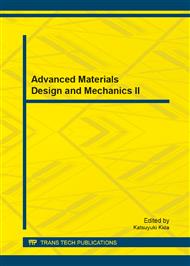p.445
p.450
p.454
p.459
p.463
p.467
p.471
p.478
p.486
Artificial Neural Network Approach for Impingement Drying of Germinated Brown Rice Soaking with Turmeric Solution
Abstract:
The objectives of this research are to determine the evolution of moisture transfer for germinated Thai jasmine Khao Dawk Mali 105 (KDML105) brown rice variety using impingement drying by eight commonly empirical drying modeling and artificial neural network (ANN) method. The experiments were carried out with drying temperatures of 80-100°C, initial moisture content of KDML105 rice samples soaking with turmeric solution was of 54-55% dry-basis and the desired final moisture content for each drying conditions was fixed at 14-16% dry-basis. The air flow rate was fixed at 7.0 m/s. The measured data in each drying conditions were simulated for getting drying equation by non-linear regression analysis. The results showed that the rice soaking with herb turmeric solution had no effect to drying kinetics and the simulated data using empirical drying equation of Henderson model had the best fitting to all measured data (R2 of 0.9978-0.9995 and RMSE of 0.0001441-0.000414). For applying ANN modeling approach, the drying temperature and drying time were considered as the input variables for the topology of neural network while the moisture ratio was the output layer. The simulation results concluded that the simulated values of the ANN model, which was not concerned with any complicated physical properties of grain rice kernels, could be used for prediction drying kinetics and was relatively high accuracy compared to those predicted results of empirical models. So the ANN method without any complicated properties related of rice samples can approach for good prediction their drying kinetics as well as the complicated drying simulations method.
Info:
Periodical:
Pages:
463-466
Citation:
Online since:
August 2013
Price:
Сopyright:
© 2013 Trans Tech Publications Ltd. All Rights Reserved
Share:
Citation:


